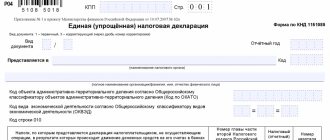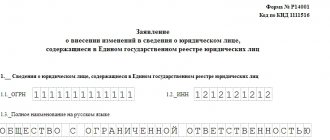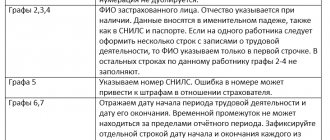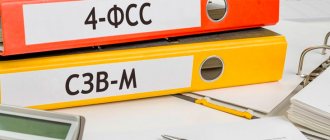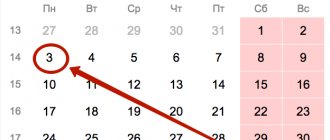Who submits form P-2
Using Form P-2, organizations report on investment activities. The document is submitted by legal entities carrying out all types of activities. This includes commercial and non-profit organizations of all forms of ownership. The exception is small businesses.
Starting from 2021, temporarily non-operating organizations that did not operate for part of the reporting quarter submit the form on a general basis. In this case, you must indicate the period of suspension of work.
Also, if there are no indicators for the reporting period, companies will no longer be able to send an information letter to Rosstat instead of a report. They will need to send a duly signed report with a completed title page and empty sections without zeros or dashes (Rosstat Order No. 390 dated July 16, 2020).
The procedure for submitting these documents
Form p-2 can be submitted in two ways: (click to expand)
- By email;
- By regular letter or courier (the most important thing is to receive notification of delivery).
In this case, the form is always submitted to those Rosstat departments that territorially correspond to the legal entity. organization address. The total number of these reports must be equal to the number of separate divisions of the organization, information on which is provided separately. This structure means a separate workplace located remotely from the main office. In this case, the period of activity must exceed 1 month. Although if the divisions are located under the same postal address, they are considered one entity. Accordingly, you only need to fill out a single form.
ATTENTION! Even if a separate division does not have an official status from the point of view of organizations (that is, internal documentation is not reflected in this way), an audit may recognize it as such in fact, so it will have to be filled out for it as well.
If an organization is going through a bankruptcy process but has not yet been declared bankrupt in the prescribed manner, it must still submit this document.
Due dates
A quarter is a reporting period in the specified form.
The form must be submitted by the 20th day of the month following the reporting quarter.
In 2021 the dates are:
January–March – until 04/20/2021 inclusive
January–June — until July 20, 2021 inclusive
January–September — until October 20, 2021 inclusive
The annual form is due by February 8, but if the date falls on a weekend, the deadline is postponed to the next working day. So, for example, based on the results of 2021, data must be submitted to Rosstat by 02/08/2021, as well as for the results of 2021, since in both cases February 8 is a working day.
SNT: a new look
If a company is going through bankruptcy proceedings but has not yet been declared bankrupt in the prescribed manner, it is still required to provide this reporting document. Due dates This document is due every quarter. The deadline is set as the 20th day of the month following the reporting month. Thus, P-2 is taken 3 times a year:
- until April 20;
- until July 20;
- until October 20.
In this case, the data is recorded on an accrual basis throughout the reporting year.
And the final report is due no later than February 8. For example, the 2021 report will need to be submitted by February 8, 2021. If this day falls on a weekend, then the deadline is set on the working day that follows the weekend (closest to it). In practice, it will be more correct if you submit the report in advance - that is, 1-2 weeks before the scheduled deadline.
Instructions for filling out form P-2
Form P-2 includes only two sections and a title page.
The first sheet contains standard information identifying the organization. All form indicators must be without VAT.
Section 1
Here the reporting organization collects investments in various non-financial assets: equipment, vehicles, inventory, etc.
The report must contain data in prices of the reporting period and prices of the corresponding period of the previous year.
Basic information on types of investments is reflected in lines 01–16. Line 01 is the resulting line, that is, it is equal to the sum of lines 02–16.
Line 09 reflects information about the amount of investment in intellectual property. It needs to be revealed in more detail in lines 10–13. Highlight how much is spent on research and development, exploration, software, and works of art or literature.
Line 14 reflects other investments that were not included in lines 02–09. From here, separately highlight in lines 15 and 16 the costs of forming a herd and growing perennial crops.
All acquired fixed assets, reflected on lines 01–16, are further distributed depending on the type of activity. The company must allocate fixed assets that will be used in different types of activities into separate groups - that is, it needs to make a breakdown according to OKVED in lines 17–19.
The tabular part of Section 1 is completed with lines 20–22, in which you need to show figures for non-produced NFA (land, licenses, business connections, contracts, trademarks, etc.).
Below the table in the same section there are two more lines in which organizations report the purchase of previously used property (lines 23–24). On line 23, reflect the costs of purchasing used fixed assets and unfinished construction projects. Separately, in line 24, highlight machinery, equipment and transport. The cost of operating systems received free of charge does not need to be reflected.
Details of filling out section 1
Section 2
If the first section reflects information about all acquisitions, then in section 2 you need to tell how the investments were made. In this case, you need to indicate how much money was spent on fixed capital and how much was spent on non-produced non-financial assets.
If the costs were at the expense of the enterprise, you need to fill out line 31.
If you had to use borrowed or budget funds, you need to fill out lines 32–44.
From line 33 “bank loans” in line 34 you need to highlight the amount received from foreign banks.
Line 37 reflects investments made from budget funds. In lines 38-40 you need to distribute the amounts by budget level: federal, subject and local.
Line 44 reflects the amounts of investments made using other funds raised that were not included in the previous lines. This includes funds from higher-level organizations, gratuitous assistance from foreign companies and individuals, funds from the issue of shares and bonds.
In the reference part in line 45, you need to put a “V” sign if part of the investment in fixed capital was aimed at environmental protection measures, as well as the construction and commissioning of environmental facilities.
On line 46, indicate the data of contractors who, in the reporting quarter, built or reconstructed the facilities reflected in lines 02-05 of the first section. Indicate the amount of work performed there. The basis for the reflection is a document (certificate) about the cost of work performed and expenses.
Details of filling out section 2
Submit Form P-2 to Rosstat electronically. Kontur.Extern gives you 3 months free!
Filling rules
The form consists of 3 sections, each of which has its own comments. They are discussed briefly below.
Title page
All information about the reporting company is filled in here:
- address – exact and detailed postal address, including region and postal code; This means the legal address (the one that is written in the documents) - and, if necessary, the actual address is entered in the second line;
- the name of the company is indicated in exactly the same form as it is given in the constituent documentation; then the short name is indicated in brackets;
- codes are entered in accordance with the accepted OKPO system
Section 1
It is necessary to reflect all information about investments for the reporting period related to investments in fixed capital, as well as non-productive assets (i.e. those that were not obtained as a result of production). All data is provided excluding VAT.
Features of filling out the columns are as follows:
- In 1 and 2, you need to provide figures in accordance with real prices relevant for the reporting quarter.
- In 3 and 4 – prices that were current during the corresponding quarter of the previous year.
- In 2 – for the quarter for which the report is being conducted.
- In 4 – for the quarter, which corresponds to the same period of the previous year.
When filling out the lines, it is necessary to take into account such nuances.
| lines | filling features |
| 1 | Investments in fixed capital are taken into account (construction, reconstruction, modernization, purchase of equipment and machinery). Investments from funds from all sources are taken into account - including government subsidies, loan proceeds, assistance from counterparties on a reimbursable and gratuitous basis. If the investment per unit of asset is less than 40,000 rubles, it is not taken into account in this line. |
| 2 | Investments made in residential buildings are reflected - houses, dormitories, carriage-type houses (mobile), garden houses. |
| 3 | Investments are prescribed in non-residential buildings that are directly related to the normal provision of the labor process and services to citizens in social and cultural terms: industrial facilities, shopping centers, office buildings, hotels, cafes, educational and medical institutions, etc. |
| 4 | Investments in infrastructure structures: roads, railways, aircraft runways, bridges, training grounds, hydraulic structures, etc. |
| 5 | Investments of funds intended to improve the agricultural quality of the soil (fertilizers, land reclamation, clearing, etc.). |
| 6 | Costs associated with the purchase of all types of vehicles, regardless of their purpose |
| 7 | Expenses associated with the purchase of computer equipment and telecommunications. |
| 8 | Expenses for the purchase of other equipment not covered by the previously discussed groups |
| 9-15 | Investments in intellectual property - developments, patents, copyrights, etc. |
| 17-19 | The investments given here should be divided into groups in accordance with the OKVED2 system |
| 20 | Costs associated with non-productive assets - land acquisition, rent, payment for licenses, etc. |
| 21 | Investments in land plots are indicated here |
| 22 | Investments in the purchase of contracts and licenses are indicated |
| 23 | Investments in cars, buildings and other assets that were held in the funds of other persons - private citizens and companies |
| 24 | Spending specifically on the purchase of equipment, vehicles and telecommunications and information products is considered separately. |
Section 2
It provides detailed information on sources of investment.
| lines | filling features |
| 31 | The company's own finances that it has invested (for example, funds from the reserve). |
| 32 | All the funds that we managed to attract from outside. |
| 33 | Investment funds sourced from bank loans |
| 34 | Clarifications are introduced here - loans from foreign banks |
| 35 | Source – funds borrowed from sources other than banks |
| 36 | Investments in fixed capital, the source of which is located abroad. |
| 37 | Source – federal (38), regional (39) and municipal (40) budget (on a reimbursable and gratuitous basis). |
| 41 | Investments from state extra-budgetary funds |
| 42 | Source – money that was received under a shared construction agreement. |
| 43 | Clarification – funds of private citizens invested in shared construction. |
| 44 | Other sources not covered by the groups discussed above. |
Nuances of filling
The title page of the report is filled out in the same way as all other statistical forms. The following information must be provided:
- full name of the legal entity (if provided for by the Charter, then the short name is also indicated);
- territorial address;
- OKPO code.
The first section records the financial results of investments in non-financial assets. According to the statistical classification, NFAs include two types of assets, such as produced and non-produced assets.
Lines 01 – 16 reflect information on investments that constitute the main condition of the company. In addition to the main list of investment objects given in lines 01–16, data on investments in objects of intellectual property, scientific research, and the purchase of software may be reflected.
Information on investments in non-produced non-financial assets is included in lines 20 – 22. These include:
- purchasing a plot of land;
- transaction costs;
- acceptance of the license.
Some lines reflect information about acquisitions of objects that form part of the operating system:
- Construction in progress;
- cars and equipment.
Note that the volume of costs, in addition to the price of capital investment objects (including those received free of charge), includes the costs of installation and testing of objects.
P 4 quarterly instructions for filling out
Not included in the cost:
- the price of real estate purchased for the purpose of further sale.
- received under a lease agreement;
- real estate related to the cost of buildings and structures;
- startup costs.
The second section of the report contains information about the sources of relevant investments. They are divided into two categories:
- Own finances.
- Attracted finances.
The financial result of own financial resources is reflected in line 31, attracted funds - lines 32 - 44. Raised funds can be presented in the form of loans, subsidies from the State Treasury, equity investments and extra-budgetary funds.
Reporting structure
Form P-2 (invest) was approved by Rosstat Order No. 414 dated July 18, 2019. In Appendix 1 to the Order you can read the form and instructions for filling it out. The reporting consists of a title page and two sections. The first section consists of three subsections. We'll look at how to fill them out further.
Title page
The title book is similar to all statistical forms. Please provide the full name of the company, postal address, reporting period and OKPO code. There should be no difficulties with the title page, so proceed to subsection 1.1.
Subsection 1.1. Information on investments in fixed capital
This section is intended to convey information about investments in fixed assets. It does not include any assets that cost less than 40,000 rubles per unit. Of course, if they are not included in fixed assets according to accounting data.
First of all, pay attention to the graphs (columns).
Column 1 summarizes the amount of investment in fixed assets, but only in the context of new and imported fixed assets. Column 1 is the result of adding columns 2, 3 and 4; in them, highlight the costs of construction, reconstruction and purchase of funds (including imported ones). Consider investments made with funds from any source.
In column 5, indicate the cost of used fixed assets and unfinished construction projects that you purchased from other legal entities, entrepreneurs or individuals. This includes newly built fixed assets purchased from the developer.
In column 6, show the price of the property that you leased and recorded on your off-balance sheet account. If you put leased property on your balance sheet, reflect it in column 1.
In column 7, reflect the cost of sold fixed assets without VAT.
Lines 01–17 in subsection 1.1 indicate the types of fixed assets, from residential buildings and premises to original works of entertainment and other investments. Line 01 is the sum of lines 02, 03, 04, 06, 07, 09, 11, 12 and 17.
Line 02 is intended for residential buildings and premises. Enter non-residential buildings in line 03 . Facilities - at 04 . From the amount on line 04 in line 05, highlight the costs of installation and dismantling of oil and gas drilling rigs. Indicate expenses for land improvement in line 06 . In line 07, enter the costs of purchasing transport; the amount for passenger vehicles is disclosed in line 08 .
Indicate costs for information and computer support in line 09 . Reflect the purchase of computers and peripherals in line 10 . Enter household inventory and other machinery and equipment in line 11. Lines 12 to 16 are needed to disclose the value of intellectual property items.
If you purchased something very specific that does not fall into the previous groups, then enter the purchase price in line 17 .
In line 18 , the legislator asks to disclose from line 01 the amount of interest paid to the bank for the loan. In line 19 , indicate the costs of installing equipment from lines 09 and 11. In line 20 from lines 07, 09 and 11, highlight imported fixed assets.
Keep records of exports and imports in the Kontur.Accounting web service. Simple accounting, payroll and reporting in one service
Subsection 1.2. Selected indicators of investment activity
There will be no problems with graphs in this section. Subsection 1.2 details lines 01, 14 and 17 from the previous subsection 1.1. From line 01, highlight the costs of design and survey work and the costs of relocation in connection with construction.
From line 14 to line 23, indicate the costs of exploration drilling. Rosstat asks for line 17 to be detailed in even more detail and indicate the costs of drilling, formation of a productive and breeding herd, etc.
Subsection 1.3. Investments in non-produced non-financial assets
Here, indicate financial investments in land, environmental management facilities, various contracts, licenses, marketing assets and business reputation.
Difficulties arise with line 32. Let us recall that it must also include operating leasing agreements, permits to use natural resources, engage in specific types of activities and receive goods and services in the future.
The importance of quarterly and annual reporting forms
In Rosstat Order No. 462 dated July 27, 2021 (as amended on October 12, 2018, as amended on July 18, 2021), you can see that Form P-2 is a quarterly report containing information on investments in non-financial assets. Form P-2 (invest) is an annual report and contains general information about the enterprise’s investments.
Based on quarterly and annual forms P-2, the Federal State Statistics Service of Russia generates a statistical report showing the dynamics of investment activities of organizations of various activities in non-financial assets.
Is it necessary to submit zero reporting to statistics?
If the company has branches and separate divisions, these reports should also be submitted for them, and for each structure separately. The deadline for submitting the statistical form P-2 is until the 20th day of the month following the reporting period. If during the reporting period there was a reorganization or closure (liquidation) of a company obligated to submit a report in Form P-2 to Rosstat, then it should still be completed for the entire period of operation, up to the moment of reorganization or closure. The same should be done in cases where the organization during the reporting period, for some reason, temporarily did not conduct business - it is obliged to provide a report on a general basis, but with a note about the time when it did not work (i.e., indicating specific dates).



